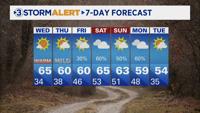Covid-19 certainly didn’t take a vacation this summer. Virus levels in the US have been on the rise for weeks, but it’s hard to know exactly how widely it’s spreading.
Federal data suggests that the current increases have stayed far below earlier peaks and notable surges. But judging by word of mouth among family, friends and coworkers, it can seem like everyone knows someone who’s sick with Covid-19 right now.
“We have several folks down with Covid, unfortunately,” one health-focused nonprofit told CNN when seeking comment for this story.
Rates of severe disease may be staying at relatively low levels, but experts agree that there are probably more infections than the current surveillance systems can capture.
“There is more transmission out there than what the surveillance data indicates,” said Janet Hamilton, executive director of the Council of State and Territorial Epidemiologists. “And we should be paying attention to it, because we are starting to see an increase.”
From 2020 to 2022, the University of Washington’s Institute for Health Metrics and Evaluation produced regular estimates of Covid-19 case rates and projections for trends. But the research institute paused that modeling in December.
All of the measures that factored into the model had stopped being reported or had changed in some way, said Ali Mokdad, professor of health metrics sciences and chief strategy officer of population health at the University of Washington.
“The surveillance system was not adequate anymore to capture changes in Covid-19,” he said. “We felt that the margin of error became really too big for us to make a prediction that we could stand by and defend.”
Mokdad declined to quantify an estimate for current case counts, but he said he’s been getting lots of calls and questions about Covid-19 recently — similar to what he experienced around the end of last year. In mid-December, the US Centers for Disease Control and Prevention was reporting about 500,000 cases a week. And IHME estimates from that time suggest that the US was in one of the worst waves of the pandemic, second only to the Omicron surge.
Two imperfect measures of transmission
Tracking Covid-19 trends has always had its challenges. But the rise of rapid home tests — and general waning of public interest in testing at all — has all but erased the ability to grasp current case counts nationwide. The CDC officially stopped reporting aggregate Covid-19 case counts months ago, noting that data had become less representative of actual infections or transmission levels over time.
As case counts started to become less reliable, some experts first pointed to hospitalization metrics as a reasonable substitute to gauge transmission. Hospitals were regularly testing all patients, whether they were coming in for Covid-related symptoms or for something else entirely, and they are required to report positive cases. The idea was that case rates in a hospital could serve as a proxy for case rates in the broader community.
There were about 15,000 new hospital admissions for Covid-19 in the week ending August 19, according to CDC data — less than half of what the numbers were at this time last year and lower than they were for about 80% of the pandemic.
But hospitals have shifted their testing practices, balancing changing federal requirements and recommendations with local risk assessments, which makes it difficult to compare data from different points in time.
“When testing supplies first were readily available, we moved to testing everyone, including health care workers routinely, including anybody who was coming in the door for any reason,” said Nancy Foster, vice president of quality and patient safety for the American Hospital Association. “Anybody and everybody got tested.”
Although hospitals are still required to report any positive cases, they’ve eased back on testing to be more in line with guidance around other infectious diseases. The focus is on those who are symptomatic, have been exposed or might be around other high-risk patients.
“Hospital admissions is much more of an indication of severity at this point in time, than I think it is of generalized transmission,” Hamilton said.
Many measures of Covid-19 and other public health surveillance rely on people to seek out clinical testing or medical treatment, and those behaviors have changed over the past few years. Wastewater surveillance offers a more consistent approach by monitoring the amount of virus shed in sewage systems.
But interpreting that data can be complicated — and with Covid, wastewater levels can’t be directly translated to case counts.
The amount of virus that an infected person sheds depends on a many factors, including the presence of antibodies from a vaccine or previous infection and the severity of the current infection.
Data from Biobot Analytics, a biotechnology firm that has partnered with the CDC, shows that wastewater concentrations of the coronavirus are similar to what they were at the start of the first winter surge in 2020.
But now that the vast majority of people in the US have some immunity to Covid-19 through vaccination, infection or both, those same viral concentrations could translate to a larger number of infected individuals with milder — but still contagious — infections.
The upward trend is clear
Even if the exact number of new infections isn’t clear, experts say, the rising trends in the data that is available are enough to raise alarm.
“Surveillance data is across a continuum. We want to have multiple different types of data that tell us different kinds of things. When they’re all pointing in the same direction, that’s maybe a time to get even more concerned,” Hamilton said.
And right now, many key measures are indicating an increase.
Weekly hospital admissions have nearly doubled over the past month, including a 19% bump in the most recent week, CDC data shows. And a sample of laboratories participating in a federal surveillance program show that test positivity rates have tripled in the past two months.
There are some hopeful signs: Biobot data shows that wastewater levels may be starting to flatten, and relatively low hospitalization rates suggest that there may be a lower risk of severe disease for many.
But despite the clear signs of a summer surge, the US has been living in a “fantasy world” where people pretend Covid-19 is “not relevant,” Dr. Deborah Birx, the White House Coronavirus Response Task Force coordinator during the Trump administration, told ABC’s “Start Here” podcast.
“We wanted to make it like flu because that was easier, but it’s never going to be like flu,” Birx said, explaining that Covid-19 comes in more frequent waves, makes people sicker, kills more people and can have longer-term complications such as long Covid. “So let’s just all agree it’s not flu. It will never be flu. Following it and surveying for it like we do for flu will never be adequate in this country.”
Precautions like masking and staying up-to-date on vaccinations are especially important as this rise in Covid-19 carries into the broader respiratory virus season, experts say.
“With every respiratory disease season — whether it’s Covid, whether it’s influenza, whether it’s RSV — those increases can impact different individuals in different ways, and there are always severe outcomes associated with respiratory disease season,” Hamilton said.
“Now is the time for us to be practicing good respiratory etiquette. Now is the time for us to remind ourselves to think about our own individual health status and those individuals that we may be around.”
The-CNN-Wire™ & © 2023 Cable News Network, Inc., a Warner Bros. Discovery Company. All rights reserved.








